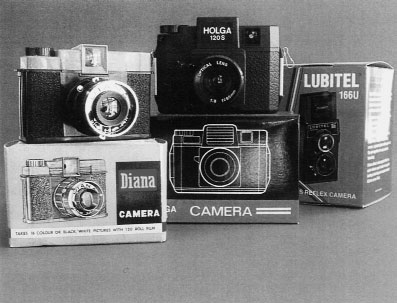By Atticus Brady
“There’s something about picking up a real piece of garbage,” said Sandra Carrion, a photographer and member of the Soho Photo Gallery on White St.
She was alluding to the cameras currently on display at the gallery, a non-profit cooperative. It is paying tribute to “hunks of junk” in its 11th annual Krappy Kamera show which will exhibit photographs from gallery members as well as winners of the sixth national Krappy Kamera competition. To be considered, the pictures must be beautiful, and the cameras from which they came, appalling.
“We want crappy cameras, not crappy images,” said David Chalk who co-founded the gallery 32 years ago. Organizers of the event say the aim is to prove that gorgeous images are made by people, not products, and that in an era of self-working, high-end digital photography and point-and-shoot cameras sometimes the worst equipment can yield the best results.
And when they say the worst, they mean it: cameras that leak light, cameras that have pinholes instead of lenses, cameras with little or no controls, cameras that came from Kids ‘R Us. Cheapness is the crappy camera’s greatest (and only) virtue. With brand names like the Ansco Pix, Diana, or Lubitel, the cameras used in this month’s exhibition have a total price tag of no more than $100.
Contemplating the clunky, stone-age plastic cameras that long ago fell into disuse Carrion said, “You have to work twice as hard. “The camera is not doing anything for you.”
And yet, through an imaginative use of shutter speed, aperture, focus mechanism, and exposure (all of the photographic elements that fancy modern cameras take care of), the photographer can create imagery as unusual and unique as anything shot with a $3,000 Nikon, something akin to an abstract painting. According to Larry Davis, the Vice President of the gallery, manual manipulation of a lousy camera can produce greater depth of field, a lighter or darker image, and myriad quirky photographic effects. The “zone plate,” for example, is a type of pinhole photography in which the aperture is covered with a film that has concentric circles. When an object lit directly by light is photographed it produces a ghostly halo effect, one that radiates from many of the Krappy Kamera pictures, as it does from the ethereal portrait of a young girl with an enigmatic smile and a seagull perched on her forefinger. “Your heart tells you what the image will look like,” said Davis.
The competition has been fun for its participants and successful as well. This year, 100 photographers submitted over 600 photographs in slide form. Janet Borden, whose own gallery showcases the work of some of today’s top photographers, judged the competition and selected the final 38 prints, an equal mix of black-and-white and color, that made it into the exhibition. Reviewing hundreds of pictures took only a matter of hours and, in the end, boiled down to personal taste – which for Borden is a leaning toward the traditional and a careful attention to the formal elements.
“I was very surprised by the quality of the work,” she said. “The stuff really looks like art.”
Francis Roberts, a freelance photojournalist, wandered the shores of Coney Island on a hot summer day, toting around her own crappy camera, the primitive and Teutonic-sounding Holga, a $20 clinker with two exposure settings: sunny and cloudy. She encountered two bathers, an older woman and a young boy, and was struck by the woman’s orange goggles. The resulting photograph, digitally scanned and printed without the use of special Photoshop effects, is a gift from the photography Gods.
“It’s pleasant in its shapes and distribution of color,” said Borden of the Grand Prize-winning photograph. “It had a nice throwaway quality to it, capturing a nice day at the beach on the spur of the moment.”
Reader Services


































